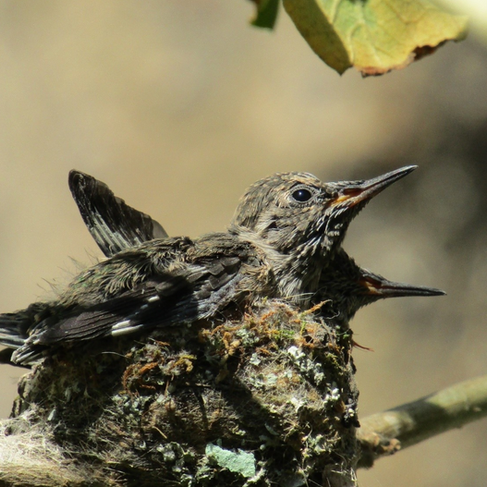How to Create a Wildlife Habitat Garden
- Daniel O'Donnell
- Jul 24, 2022
- 3 min read
Updated: Nov 21
One way to create a habitat garden is to look at the National Wildlife Federation’s web page for creating and certifying a residential habitat garden (www.nwf.org/certify). The NWF has created 5 actions that need to be implemented that will not only attract wildlife to an urban garden but greatly increase their survival rate. The California Native Plant Society (www.cnps.org/gardening/native-design-basics/habitat-gardening) and Bay Nature (baynature.org/article/starting-a-wildlife-habitat-garden) also have great tips.
Food:
Placing seeds or nuts in a squirrel or bird feeder is only one way to feed wildlife. Plant choices are also important. Planting a variety of plants that flower and fruit at different times will ensure natural sources of food for wildlife for long periods of time. Allowing the seeds to mature by not cutting off the dying flowers will provide nutrition over a long period of time as well. Making sure to plant a diversity of native flowering plants will benefit local insect, bee, and butterfly populations. In some cases, the foliage might provide nourishment for hungry larva so it is OK if the plant gets devoured.

Water: Water, especially in drought years is crucial for wildlife. Not many urban gardens in the Bay Area have natural ponds or springs. Nor do they have streams flowing through them. So, water must be provided to wildlife through birdbaths, fountains, or other water features. Placement is important. A water source placed at ground level is great for larger wildlife such as squirrels, opossums, frogs, and lizards. However, it can make it easier for predators to prey on birds and butterflies so their water source should be higher off the ground and clear of hiding places. Stones should be placed in shallow baths so beneficial insects and bees can get out of the water if they fall in. Branches placed in larger features will allow larger animals to climb out if they fall in.
Cover: Cover for protection and to raise their young is crucial. Mature trees can keep birds, squirrels, and other wildlife safe from attacks from above and below. Different levels and densities of foliage can also provide protection for different mammals, reptiles, and birds of varying sizes. Evergreen plants provide protection all year long. Insect Hotels that contain an array of different size twigs, branches, and other beneficial materials will provide homes to native bees, as well as many other beneficial native insects. As will the occasional stump or log placed in the garden. However, leaving a small percentage of non-covered space is also important. Open space around food and water sources can protect wildlife from predators and ground-nesting bees need the mulch-free ground to build their nests.
Sustainable practices: Sustainable practices are important because they more closely mimic the balance of nature. Chemicals and pesticides can create an environment void of insects or poison susceptible wildlife. In a sustainable wildlife habitat garden, there need to be insects

at the bottom of the food chain for it to support animals higher up. An insect-free garden will not attract Bay Area bats which are amazing to watch in the twilight garden. There will be no enjoyment from the singing of frogs and toads because they will have no food source. Furthermore, many pesticides kill bees, ladybugs, dragonflies, and many other beneficial insects which protect vegetable and ornamental plants from predators.
Other things that can be done to attract and protect wildlife include predicting and monitoring what wildlife comes into the garden and when. Knowing when migratory birds are nesting will tell a person when not to prune trees. It is actually illegal to prune trees during migratory nesting season. Learning how to prune or not to prune small sections of shrubs can create nesting areas or pathways for wildlife. Planting plants that benefit specific bird, butterfly, or bee species will allow them a food source that will have less competition from other animals. Nesting boxes, bat boxes, and birdhouses with specific hole diameters will also attract targeted species.
Within days of creating a habitat garden wildlife will begin to show up. You will see before your eyes the garden transform into a vibrant and fascinating urban ecosystem, and you will be happy you built a wildlife garden, and they came.












Comments